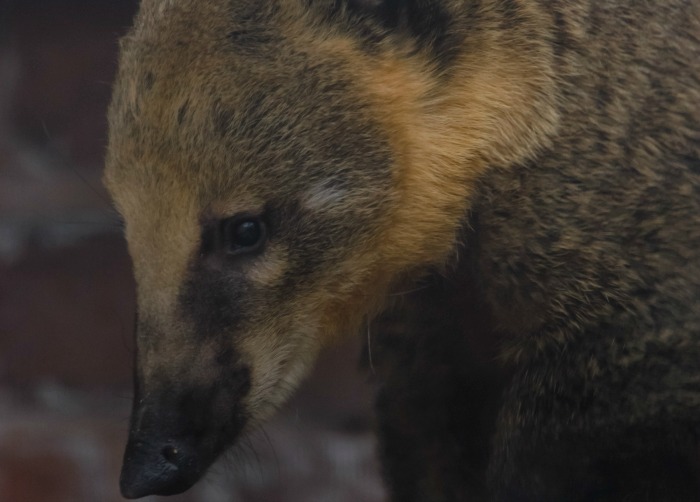
Staff at the RSPCA wildlife centre in Nantwich are caring for an exotic patient – a South American or ‘ring-tailed’ coati.
The mammal, native to South America, was picked up by an RSPCA inspector in North Yorkshire after he was found wandering loose in a street on April 2.
The coati – also known as a coatimundi – who has been nicknamed Razzle, was transferred to the RSPCA’s Stapeley Grange Wildlife Centre, in London Road, Nantwich.
Lee Stewart, manager at Stapeley Grange, said: “Razzle is likely to have been a pet and has either escaped or been abandoned.
“Thankfully he was not injured and appears to be in good health.
 “He has become very popular with the staff at Stapeley as it is so rare for us to have a coati staying with us!”
“He has become very popular with the staff at Stapeley as it is so rare for us to have a coati staying with us!”
Since arriving at Stapeley, Razzle has been eating a diet of fruit and spends the day snoozing and climbing on boxes in his enclosure.
Nicola White, exotics senior scientific officer with the RSPCA, said: “Ring-tailed coatis are relatives of the raccoon.
“They are native to South America where they live in forests and eat mainly invertebrates and fruit.
“Coatis are wild animals and providing for their needs is difficult in a home environment.
“They need lots of space and stimulation to meet their needs and we do not think they make good pets.
“We urge potential owners of exotic pets to thoroughly research what the animal needs and think carefully about whether they are able to provide this for the whole of the animal’s life, before taking one on.”
For information on exotic pets, visit www.rspca.org.uk/adviceandwelfare/pets/other
Anyone who comes across an injured or sick animal, or an animal who has been abandoned, should contact the RSPCA’s 24-hour emergency line on 0300 1234 999.
An RSPCA video of the coati in Stapeley Grange is available here http://bit.ly/2nZia5S
(Pics by Stu Raw)





















Recent Comments